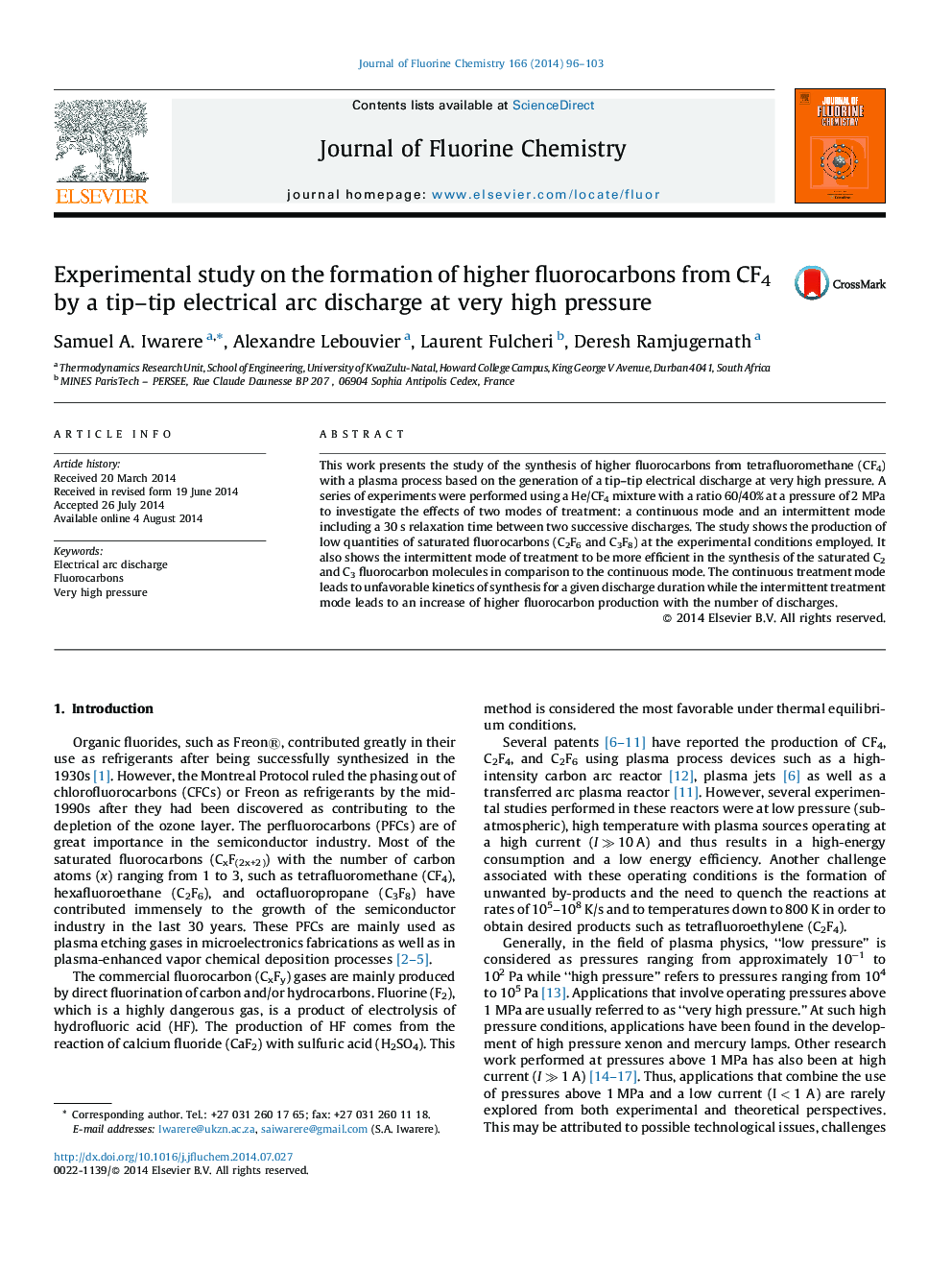| Article ID | Journal | Published Year | Pages | File Type |
|---|---|---|---|---|
| 1314243 | Journal of Fluorine Chemistry | 2014 | 8 Pages |
•A non-direct fluorination method for synthesis of higher fluorocarbons was investigated.•A novel tip–tip arc discharge reactor was employed for synthesis of fluorocarbons at very high pressure.•The effects of a continuous and an intermittent treatment mode on fluorocarbon formation were studied.•Use of intermittent treatment mode using short pulses could be a good prospect for the formation of higher fluorocarbons.
This work presents the study of the synthesis of higher fluorocarbons from tetrafluoromethane (CF4) with a plasma process based on the generation of a tip–tip electrical discharge at very high pressure. A series of experiments were performed using a He/CF4 mixture with a ratio 60/40% at a pressure of 2 MPa to investigate the effects of two modes of treatment: a continuous mode and an intermittent mode including a 30 s relaxation time between two successive discharges. The study shows the production of low quantities of saturated fluorocarbons (C2F6 and C3F8) at the experimental conditions employed. It also shows the intermittent mode of treatment to be more efficient in the synthesis of the saturated C2 and C3 fluorocarbon molecules in comparison to the continuous mode. The continuous treatment mode leads to unfavorable kinetics of synthesis for a given discharge duration while the intermittent treatment mode leads to an increase of higher fluorocarbon production with the number of discharges.
Graphical abstractThe conversion of tetrafluoromethane (CF4) as a plasma gas into higher gaseous fluorocarbon products (value-added products) using a tip-tip electrical discharge reactor with arc discharge generated at very high pressure and low current condition.Figure optionsDownload full-size imageDownload as PowerPoint slide
